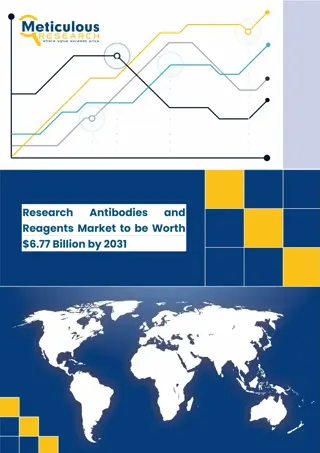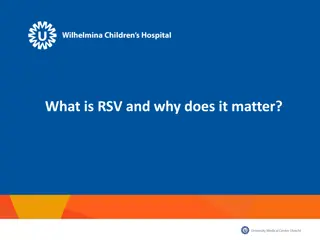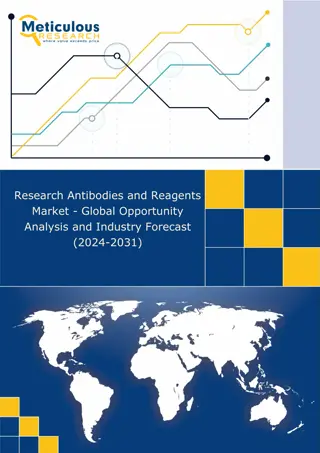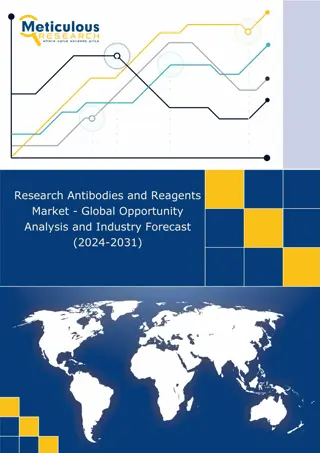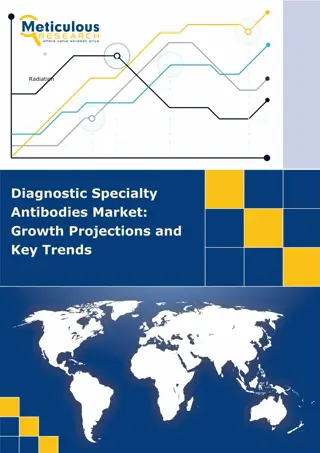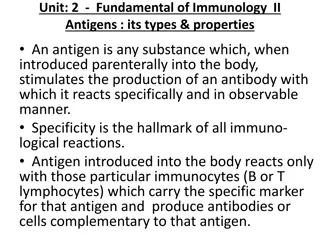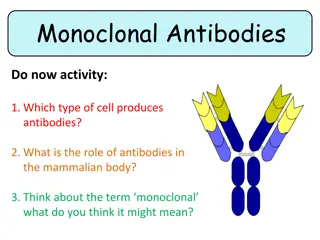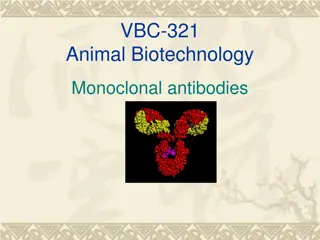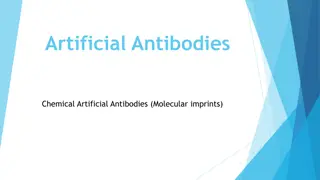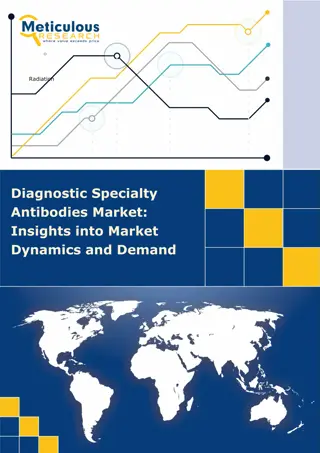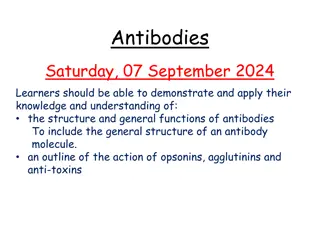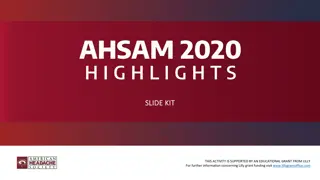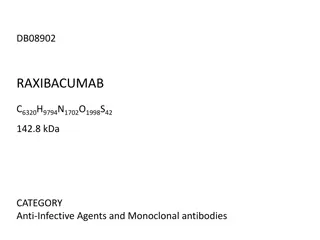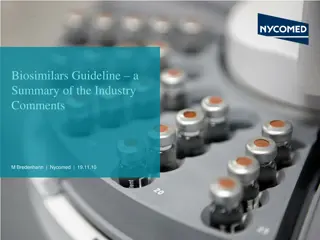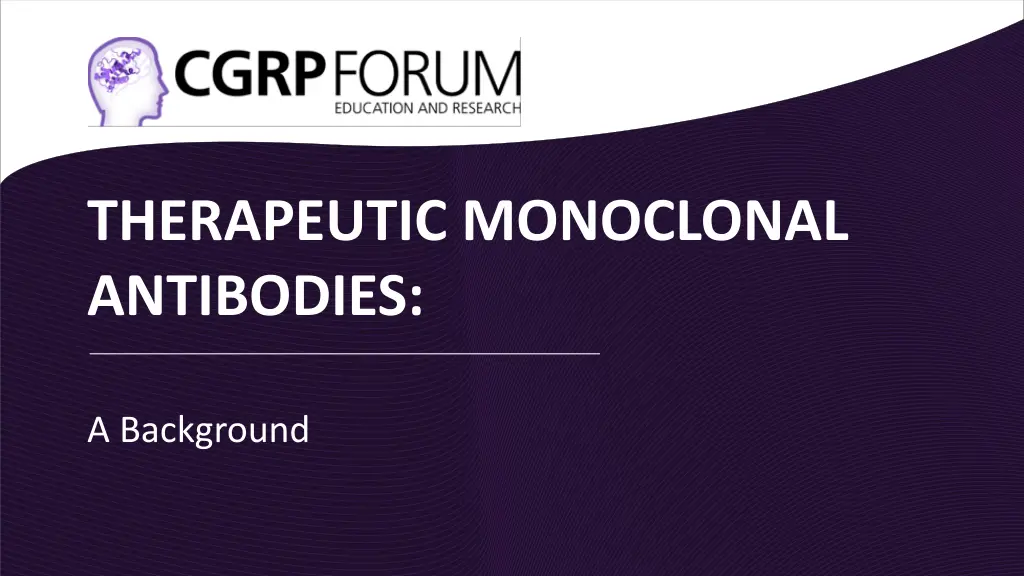
Understanding Monoclonal Antibodies and Their Applications
Monoclonal antibodies, produced from a single cell line, play a crucial role in modern medicine due to their specificity and reduced immunogenicity. Learn about the structure, types, and therapeutic potential of monoclonal antibodies in this comprehensive guide.
Download Presentation

Please find below an Image/Link to download the presentation.
The content on the website is provided AS IS for your information and personal use only. It may not be sold, licensed, or shared on other websites without obtaining consent from the author. If you encounter any issues during the download, it is possible that the publisher has removed the file from their server.
You are allowed to download the files provided on this website for personal or commercial use, subject to the condition that they are used lawfully. All files are the property of their respective owners.
The content on the website is provided AS IS for your information and personal use only. It may not be sold, licensed, or shared on other websites without obtaining consent from the author.
E N D
Presentation Transcript
THERAPEUTIC MONOCLONAL ANTIBODIES: A Background
What are monoclonal antibodies? Monoclonal antibodies are produced from a single hybridoma cell line and are therefore identical to the parent cell Human or fully human monoclonal antibodies (mAbs) have been developed to reduce immunogenicity Silberstein S et al. , Headache 2015;55:1171.
Polyclonal versus monoclonal antibodies Polyclonal antibodies (pAbs) Are from multiple B-cells that recognize multiple antigen epitopes Monoclonal antibodies (mAbs) Are from a single B-cell line and recognize one antigen epitope Silberstein S et al. , Headache 2015;55:1171.
Structure of the antibody: Immunoglobulin (Ig) glycoprotein The antibody has a Y-shaped structure, composed of 2 identical heavy chains connected by disulfide bonds to 2 identical lightchains Silberstein S et al. , Headache 2015;55:1171.
Antibody isotypes Five different isotypes exist in humans: IgA ( ) often a dimer, protects mucosal and lymphoid tissues IgD ( ) monomer, universally expressed on naive B-cells IgE ( ) monomer, mediates parasitic infections and allergic reactions IgG ( ) monomer, involved in the secondary phase of the immune response, occurs in 80% of all antibodies IgM ( ) pentamer, first to appear after an infection Each subclass has a different ability to activate host immune function, and thus can be tailored to a particular disease Silberstein S et al. , Headache 2015;55:1171.
Most antibodies are immunoglobulin G (IgG) Nearly all marketed antibody drugs are IgG Human IgG2 and IgG4 poorly support effector functions There are few human IgG3 molecules in clinical development: Hinge region is longer and more prone to proteolysis than human IgG1, IgG2 and IgG4 Silberstein S et al. , Headache 2015;55:1171.
Human IgG receptors (FcR) Divided into three classes Fc RI (CD64) Fc RII (CD32) subdivided into Fc RIIa (activating), Fc RIIb (inhibitory) and Fc RIIc (activating) Fc RIII(CD16) subdivided into Fc RIIIa (activating) and Fc RIIIb Fc RIIa, Fc RIIIa, and Fc RIIIb activity is complicated by differential cell expression patterns and polymorphisms IgG design must consider both IgG isotype and Fc R Silberstein S et al. , Headache 2015;55:1171.
Nomenclature for therapeutic monoclonal antibodies Silberstein S et al. , Headache 2015;55:1171.
Mechanism of action of therapeutic monoclonal antibodies Destroy target cells or alter target-cell function without cell destruction Silberstein S et al. , Headache 2015;55:1171.
Why therapeutic monoclonal antibodies need to be given parenterally Large size and hydrophilicity Limit diffusion from gastrointestinal epithelium Denatured in stomach and degraded IV administration allows for rapid delivery of monoclonal antibodies Plasma concentrations are higher after IV than SC or IM administration SC or IM administration: absorption by lymphatic system Slow lymph flow rate leads to slow absorption (1-8 days to peak plasma concentrations) Antibodies are largely confined to vasculature Silberstein S et al. , Headache 2015;55:1171.
Therapeutic monoclonal antibody pharmacokinetics Administered every 2 weeks or monthly: Human IgG1, 2, and 4 serum half-life is ~ 3 weeks Factors affecting pharmacokinetics: Properties of antibody (e.g., origin, structure, size, concentration, affinity) Properties of the antigen or target (e.g., distribution, concentration) Patient characteristics (e.g., body mass index, sex, age, activity level, concurrent medications) Silberstein S et al. , Headache 2015;55:1171.
Therapeutic monoclonal antibody metabolism and elimination Not filtered by kidney or excreted into urine intact Catabolized into peptides and amino acids by reticuloendothelial system Silberstein S et al. , Headache 2015;55:1171.
Therapeutic monoclonal antibodies versus small molecule therapies Monoclonal antibodies Small molecule therapies Smaller (<1 kD); able to enter cells and cross blood-brain barrier Larger (~150kD); mainly extracellular Target-specific Less specific Parenteral administration Oral administration possible Longer dosing interval (half-life: days to weeks) Shorter dosing interval (half-life: hours) Not eliminated via hepatic, renal or biliary routes Elimination via hepatic, renal and/or biliary routes Lower risk of drug-drug interactions Drug-drug interactions possible Silberstein S et al. , Headache 2015;55:1171.
Safety of therapeutic monoclonal antibodies Toxicity can be divided into 2 major categories: Related to the antibody target Mechanism-based Target function and location May activate or suppress immune system, resulting in higher infection rates Related to the host Immune system recognizes monoclonal antibodies as foreign, resulting in formation of anti-drug antibodies (ADAs) Silberstein S et al. , Headache 2015;55:1171.
Safety of therapeutic monoclonal antibodies Most adverse events are target-related Intended tissue Unintended tissue Nonspecific toxicities Antibodies against monoclonal antibodies Silberstein S et al. , Headache 2015;55:1171.
Humanization of therapeutic monoclonal antibodies has reduced their immunogenicity Foltz I N et al. Circulation. 2013;127:2222-2230
Benefits of therapeutic monoclonal antibodies No toxic metabolites (broken down to constituent amino acids) Restricted distribution Pharmacokinetics are ideally suited for chronic disease prevention (half-life >14 days) No off-target toxicity and overall tolerability is usually good (although dependent on mechanism of action)

